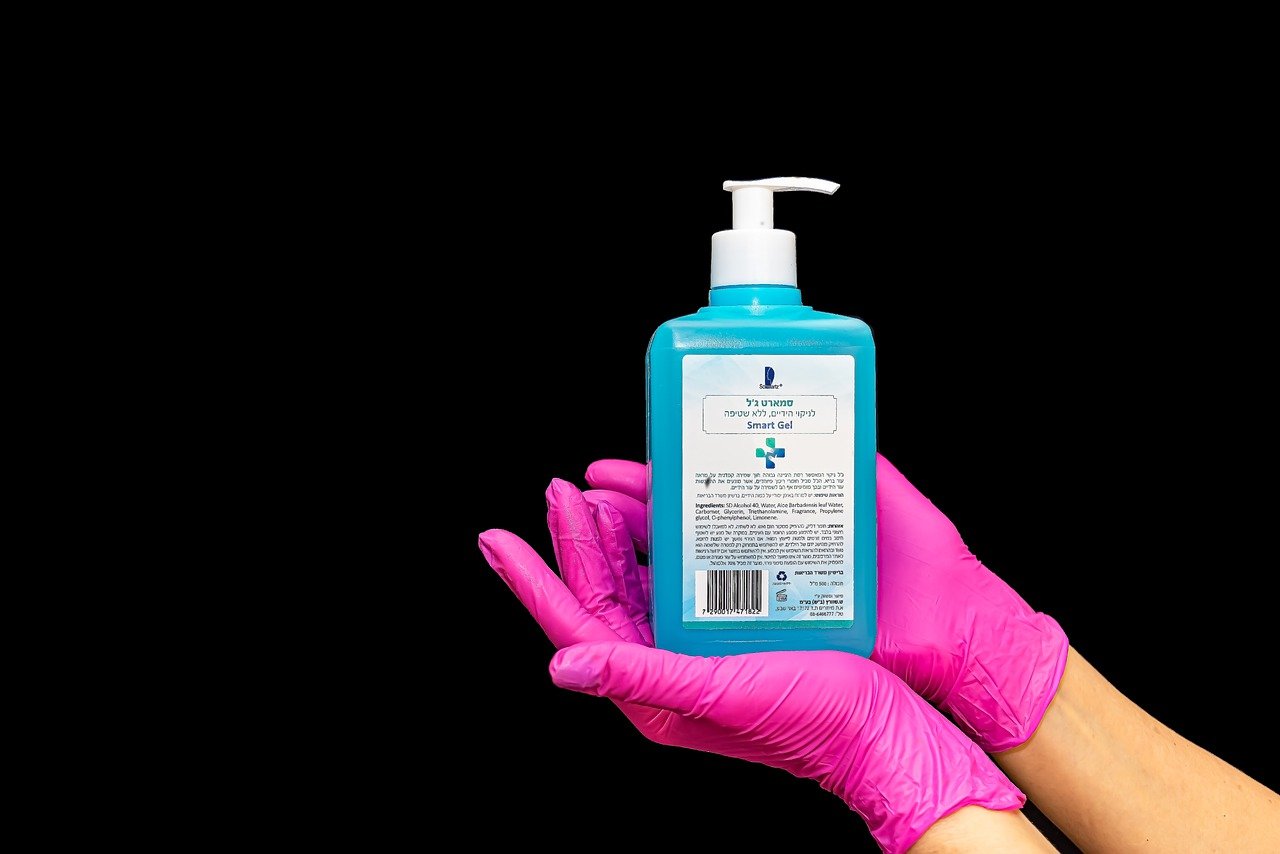The importance of hand sanitizers grew tremendously amid the coronavirus pandemic. Now, germs are all around us and soap and water is the best way to keep your hands germ-free.
However, hand sanitizers offer a fitting and effective way to clean your hands when handwashing is not readily available. Most hand sanitizers contain over 60 percent alcohol, which kills germs and bacteria efficiently.
Unfortunately, excessive use of alcohol-containing hand sanitizers can lead to dry skin. Hand sanitizer infused with essential oils is a brilliant way to counter the flaky skin.
There are many benefits of them – they support the alcohol's germ-battling, antiseptic, antimicrobial, antiviral, and antibacterial traits while keeping your hands moist and fragrant.
You can make scented hand sanitizer sprays with essential oils at home. It is fairly easy to do and only requires a few ingredients. Moreover, it is perfect for when you need to disinfect and clean hands when there is no water available.
How do hand sanitizers work?
According to the FDA, a hand sanitizer contains ethyl alcohol (also known as ethanol), isopropyl alcohol (isopropanol), or benzalkonium chloride (BAC) as the active ingredient. The main component in most hand sanitizers is alcohol, which destroys disease-causing pathogens.
Hand sanitizers break apart proteins, splitting cells into pieces or disrupting a cell's metabolism.
Evidently, solutions even with 30 percent alcohol have a certain bacteria-eliminating ability. The usefulness of a solution increases as the concentration of alcohol grows.
According to various studies, alcohol kills a wide range of bacteria and viruses when the alcohol concentration increases by over 60 percent.
How to make scented hand sanitizer spray?
Alcohol-based hand sanitizers effectively kill pathogens, but purchasing bottles after bottles of these solutions can be quite an expense. Fortunately, making your own solution is quite easy and less expensive.
You will require only a handful of ingredients that include isopropyl or rubbing alcohol; some aloe vera gel, your preferred essential oils, a measuring cup, mixing bowl, spoon, and an empty bottle.
To make an effective, germ-eliminating hand sanitizer to keep alcohol content around the recommended 60 percent, you need to follow a 2:1 proportion of alcohol to Aloe Vera. Here are some tips to abide by:
- Make the solution in a clean space; wipe down the surface with a diluted bleach solution before beginning.
- Wash your hands. Clean a spoon and whisk that you'll be using to mix the solution.
- Use undiluted alcohol for the sanitizer. Mix alcohol and Aloe Vera; add drops of essential oil, and stir until well-blended.
- Pour the solution into a clean bottle and use.
Hand sanitizer spray vs gel
There are two most common types of hand sanitizers – spray and gel – both offering more benefits than others. However, hand sanitizer gels are a preferred choice as they are readily accessible, inexpensive, and easy to use.
When comparing hand sanitizer spray vs gel, gel sanitizers are particularly effective as they cover every inch of your hand.
Gel sanitizers are less prone to product defects like damaged spray pumps, etc. They are easy to carry and less likely to spill. On the other hand, sprays may leave parts of your hand unprotected.
According to studies, gel sanitizers eliminate bacteria by 80 percent, while sprays only work at an efficiency rate of 71 percent.
Handwashing with soap and water vs hand sanitizer
Do you ever wonder which is better, hand sanitizer or handwashing? According to the CDC, handwashing with soap and water is probably the best way to clean your hands and get rid of any germs.
Hand sanitizers, on the other hand, work quickly, but they do not eliminate all types of germs. You should only use sanitizers—with an alcohol concentration of 60 percent or above—in case soap and water are not available.
Soap and water are more effective at killing many germs, and can help you get rid of visible dirt and grease. While quite potent, hand sanitizers may not always be effective in removing pathogens.
For instance, people may not use the required amount of the sanitizer or may wipe it off before it has completely dried. Hand sanitizers may also not be able to remove harmful chemicals from hands, such as pesticides and heavy metals.
You need to remember when to wash your hands with soap and water, and when to use a hand sanitizing solution.
You need to clean hands with soap and water before preparing and eating food:
- Before and after caring for a sick person.
- Before and after treating a cut or wound.
- After using the toilet.
- Changing diapers.
- Post-bathroom usage.
- After handling pets, pet waste and pet food.
- After disposing garbage.
- And to clean visibly dirty or greasy hands.
Likewise, you should use sanitizers before and after visiting someone in a hospital; after coughing, sneezing, or blowing your nose; and/or in case you don't have immediate access to soap and water.


